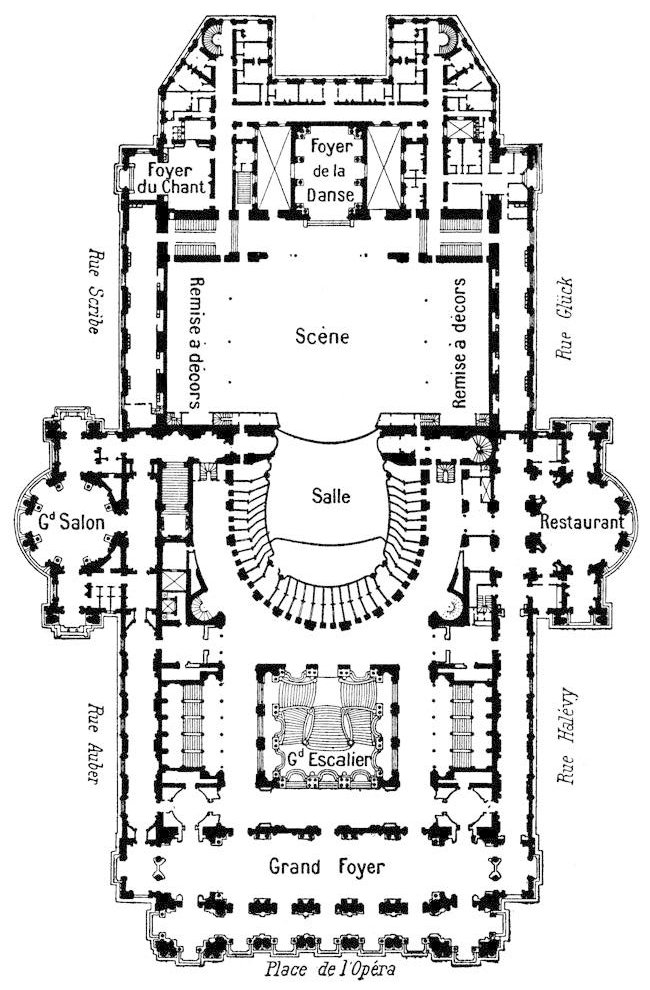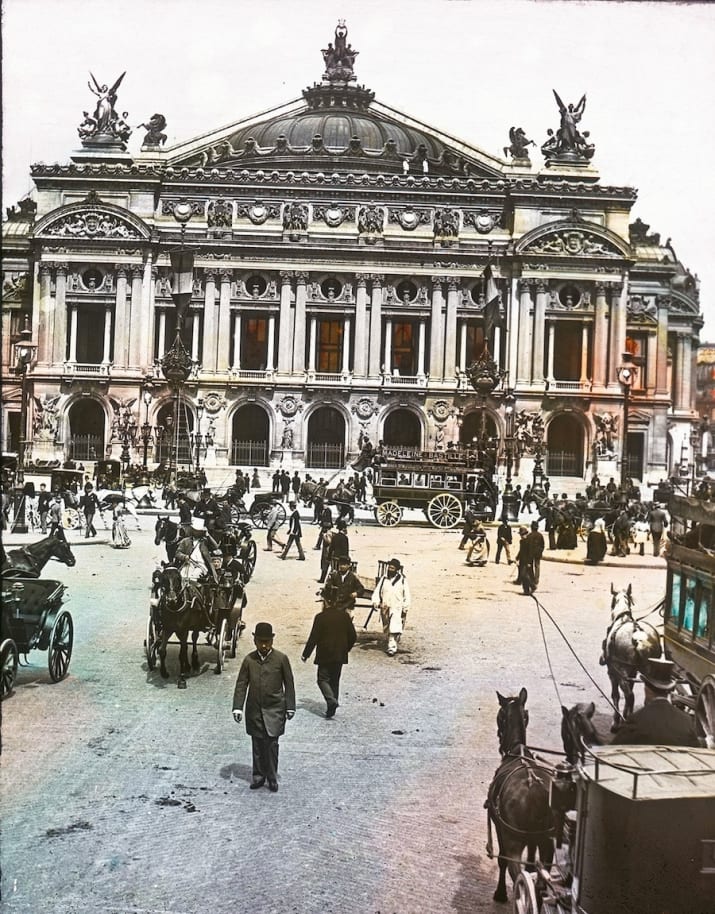Palais Garnier
Introduction

The Palais Garnier is a 1,979-seat opera house, which was built from 1861 to 1875 for the Paris Opera. It was originally called the Salle des Capucines, because of its location on the Boulevard des Capucines in the 9th arrondissement of Paris, but soon became known as the Palais Garnier, in recognition of its opulence and its architect, Charles Garnier. The theatre is also often referred to as the Opéra Garnier and historically was known as the Opéra de Paris or simply the Opéra, as it was the primary home of the Paris Opera and its associated Paris Opera Ballet until 1989, when the Opéra Bastille opened at the Place de la Bastille. The Paris Opera now mainly uses the Palais Garnier for ballet.
The Palais Garnier is "probably the most famous opera house in the world, a symbol of Paris like Notre Dame Cathedral, the Louvre, or the Sacré Coeur Basilica."[9] This is at least partly due to its use as the setting for Gaston Leroux's 1910 novel The Phantom of the Opera and, especially, the novel's subsequent adaptations in films and Andrew Lloyd Webber's popular 1986 musical. Another contributing factor is that among the buildings constructed in Paris during the Second Empire, besides being the most expensive, it has been described as the only one that is "unquestionably a masterpiece of the first rank." This opinion is far from unanimous however: the 20th-century French architect Le Corbusier once described it as "a lying art" and contended that the "Garnier movement is a décor of the grave".
The Palais Garnier also houses the Bibliothèque-Musée de l'Opéra de Paris (Paris Opera Library-Museum). Although the Library-Museum is no longer managed by the Opera and is part of the Bibliothèque nationale de France, the museum is included in unaccompanied tours of the Palais Garnier.
Architecture and Style
[[]]
The Palais Garnier is a building of exceptional opulence. The style is monumental and considered Second-Empire Beaux-Arts style with axial symmetry in plan and eclectic exterior ornamentation with an abundance of Neo-Baroque decorative elements. These include very elaborate multicolored marble friezes, columns, and lavish statuary, many of which portray deities of Greek mythology.
The Exterior
Main facade
The principal facade is on the south side of the building, overlooking the Place de l'Opéra and terminates the perspective along the Avenue de l'Opéra. Fourteen painters, mosaicists and seventy-three sculptors participated in the creation of its ornamentation.
The two gilded figural groups, Charles Gumery's L'Harmonie (Harmony) and La Poésie (Poetry), crown the apexes of the principal facade's left and right avant-corps. They are both made of gilt copper electrotype.
The bases of the two avant-corps are decorated (from left to right) with four major multi-figure groups sculpted by: François Jouffroy (Poetry, also known as Harmony),[16] Jean-Baptiste Claude Eugène Guillaume (Instrumental Music), Jean-Baptiste Carpeaux (The Dance, criticized for indecency), and Jean-Joseph Perraud (Lyrical Drama). The facade also incorporates other work by Gumery, Alexandre Falguière, and others.
Gilded galvanoplastic bronze busts of many of the great composers are located between the columns of the theatre's front façade and depict from left to right: Rossini, Auber, Beethoven, Mozart, Spontini, Meyerbeer, and Halévy. On the left and right lateral returns of the front facade are busts of the librettists Eugène Scribe and Philippe Quinault, respectively.
